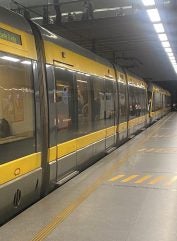
In a groundbreaking collaboration in late 2023, the Portuguese tunnelling society (Comissão Portuguesa de Túneis e do Espaço Subterrâneo – CPT) invited the ITA’s Committee of Underground Space (ITACUS) to moderate and participate in a thought-provoking event on ‘Rethinking Our Cities using the Underground Space.’
The gathering was held in the northern coastal city of Porto and drew together professionals from diverse domains, such as civil engineering, architecture, geotechnics, geology, and urban planning.
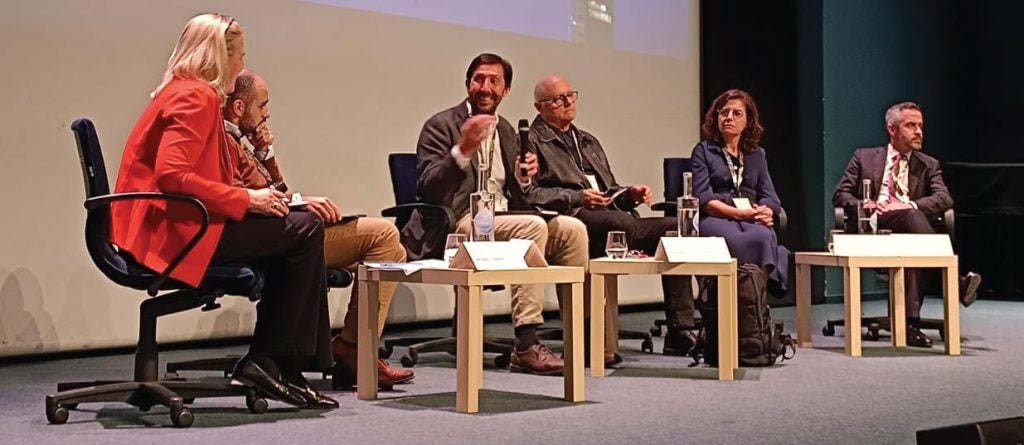
A range of topics were discussed as the disciplines converged in the intensive one-day programme, which was also co-organised with the Faculty of Engineering of the University of Porto (Faculdade de Engenharia Universidade do Porto – FEUP), the Portuguese geotechnical society (Sociedade Portuguesa de Geotecnia – SPG), and the country’s institution for sustainable construction (Instituto para a Construção Sustentável (ICS).
The event’s presentations covered a spectrum of themes, from current developments that utilise underground space, such as metro transport and highspeed rail to drainage tunnel systems, sustainability, and projects employing powerful digital technology, for example Building Information Modelling (BIM).
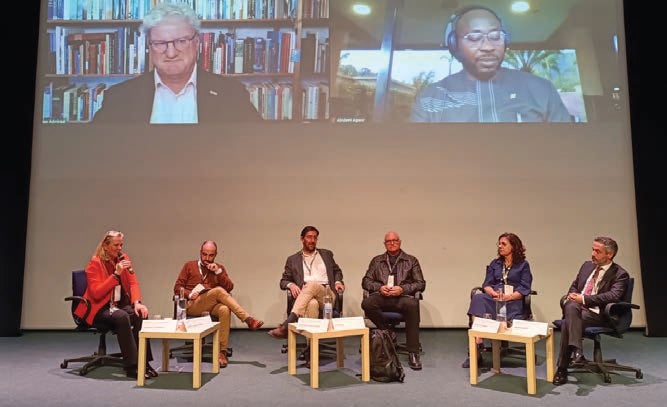
Notable projects were discussed that showcase the successful integration of underground spaces with surface environments in dense urban areas, including examples such as, locally, the renovation of Bolhao Market in Porto, and the construction of Naples metro station, in Italy.
During the event, a pivotal feature was a distinguished multidisciplinary panel was gathered for a roundtable discussion. The panel included: Antonio Topa Gomes, Deputy of the National Assembly and Professor of the University of Porto, FEUP; Sérgio Bernardes, Civil Engineer, Infraestructure of Portugal (IP); Lúcia Lourenço, Member of the Executive Board of Metro do Porto; Rui Pina, Civil Engineer at the Metropolitano de Lisboa; and, Daniel Salvador Da Silva Leite, Senior Engineer at Systra – Sotecni, and AFTES representative.
They were joined online, on screen in the auditorium, by Han Admiraal, Co-chair ITACUS, and Abidemi Agwor, Steering Board member and National Action Think Deep Programme Lead, ITACUS, and President of the Nigerian Tunnelling Association, in the 2.5-hour panel discussion that explored topics ranging from underground construction and metro development to high-speed rail.

As ITACUS co-chair, I had the honour of leading and moderating the roundtable discussion during the gathering.
Key points of discussion among the panelists revolved around: building a vision for the underground; the importance of policy; planning strategies; and, overcoming obstacles in political, contractual, and financial realms.
Audience engagement provided valuable insights into the evolving role of underground spaces, emphasising their intensifying use for resilience, climate change adaptation, and diverse energy sources.
Han Admiraal emphasised the need for a strategic vision in using the subsurface, urging cities to consider its impact on sustainability and resilience. Abidemi Agwor highlighted regional disparities in the demand and utilisation of underground spaces, stressing the need for novel strategies and frameworks, especially in the Global South.
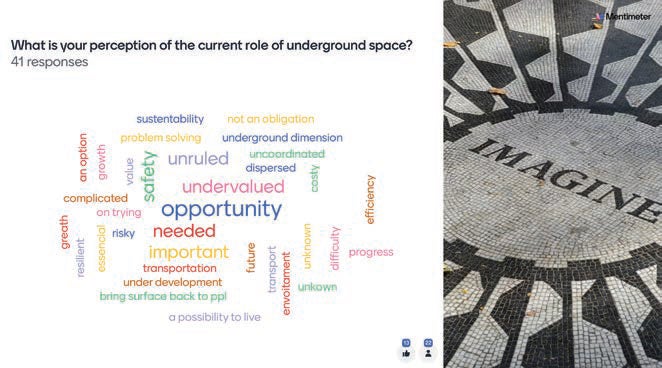
ITACUS asserted that there is often a disconnect between society and engineers regarding how to utilise the subsurface. Engineers typically concentrate on finding solutions, but a more effective approach might be to first understand the challenges that cities encounter. This is where urban planning steps in, emphasizing the importance of having a vision and strategy to address these challenges.
Imagine a city wanting to be sustainable and resilient: Can that city achieve this without looking beneath the surface? Is it possible to be resilient without any knowledge what lies below out feet?
This is where geology comes in to help. Expanding on this theme: What opportunities does the subsurface offer when it comes to fulfilling the United Nations Sustainable Development Goals (SDGs)? What it equates to is that even if a city has no intention to use its subsurface, it would be foolish not to know what lies below the surface.
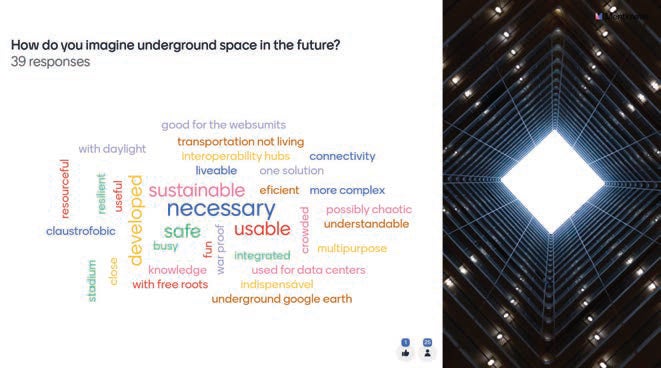
So, in any case: a vision and strategy are required to consider the impact of the subsurface on the city. If a city wants to look at the opportunities that the subsurface offers in terms of underground spaces, the vision and strategy can be expanded by relating to the UN SDGs by asking: of what is the subsurface composed? what is present in terms of groundwater in aquifers, and, for example, where there are old mines do they present risk or are they assets?
By looking at the various SDGs – like Zero Hunger, Clean Water and Sanitation, Affordable and Clean Energy – we can see how the use of the subsurface, through creating or reusing underground spaces, could contribute to the pursuit of such goals.
After this initial stage, the next steps would be to develop a policy on the use of the subsurface, and then utilise planning as an instrument to achieve this policy. Not doing so will inevitably lead to chaos in the subsurface with different potential uses competing for the limited available space. It could lead to contamination of underground water aquifers or hinder development of transport systems through energy uses.
Instead, a more strategic approach can be taken. Abidemi Agwor leads the ITACUS National Action Think Deep Programme (NATDP). Joining the event online from Lagos, Nigeria – where he was then hosting a national conference on the potential of underground space, there joined by ITA-AITES and ITACET – he stated that the demand and utilisation of underground spaces in our cities do exhibit noteworthy variations between major regions, notably between the Global North and the Global South.
Cities in the Global North, boasting of more extensive subterranean development, have cultivated established knowledge frameworks that address the operation and delivery management of such underground assets. However, there has been limited attention given to optimising the use of existing and future underground spaces from the context of planning.
The experience of the Global North presents a significant learning opportunity for cities in the Global South, underscoring the importance of developing novel strategies and frameworks for harnessing the potential of underground spaces. But, additionally, it also urges cities in the Global North to engage in a critical re-evaluation of the functionality of their existing underground assets, a process some cities are presently undertaking.
The integration of underground space into the urban fabric must be planned meticulously, considering the imperative to forecast and create scenarios through the multifaceted lenses of social, economic, and environmental dynamics. This emphasis on forward looking planning cannot be overstated.
While the functions of underground assets are bound to evolve over time, it is essential to anticipate these changes and engineer solutions from the outset. In essence, the utilisation of underground spaces in urban planning is a dynamic and evolving field. It offers valuable opportunities for cities in both the Global North and the Global South to learn from one another, adapt to changing needs, and ensure that the integration of underground spaces into urban landscapes is carried out with foresight and effectiveness, said Agwor.
Specific complexities in underground-related projects were discussed, such as aquifer heat storage and retrieval systems, which could potentially conflict with other ongoing as well as future developments in the subsurface environment of a city, such as for urban transport with metro lines. Therefore, planning policies to prevent conflicting outcomes from overlapping developments are needed – even if they have different timelines, or simply the potential for future possibilities are desired to be held open, or at least not closed off.
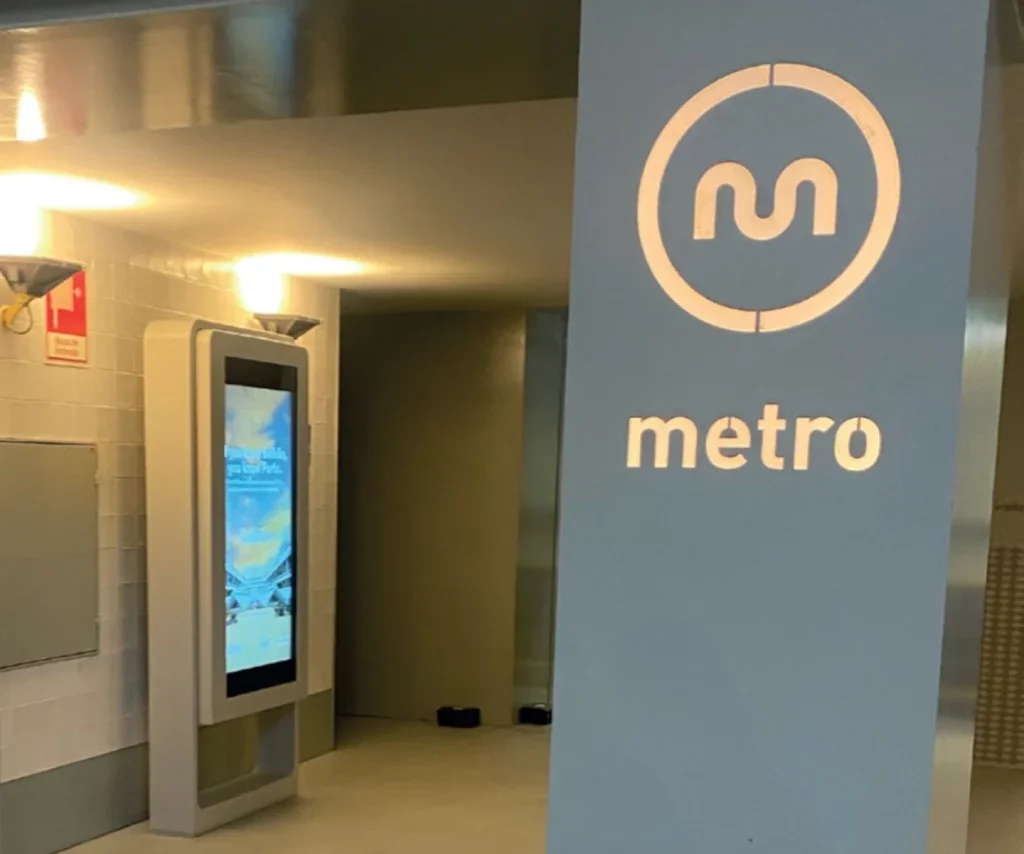
Moreover, policies need to address how an optimal and balanced use of the subsurface can be achieved. This is quite important as certain uses can have an extreme impact.
In one of many examples, the case of the planned tri-national EU-funded underground Einstein Telescope was cited. The physics research project is to study gravitational waves and do so by creating large underground space for laboratory equipment, in the border area of The Netherlands, Belgium and Germany featuring a geology that helps to dampen vibrations, according to the official project information. Site studies are underway, and it is hoped that construction work can start in 2028 for the research facility to be commissioned and operational by 2035. Pending those outcomes, other possible alternative candidate sites are being considered, including the island of Sardinia and, in Germany, the state of Saxony.
For such a project, and other major structures in the underground, policies are required to set the rules and the basis for planning of the subsurface. They can also be helpful instruments to support consideration of other surface and subsurface developments.
In addition to the round table discussion, the event in Porto also featured valuable contributions from several experts, providing presentations on the following:
- Planning and management of underground space, engineering of underground works (Daniel Leite and José M. Galera),
- Architecture and management of public space, such as the new accesses to the Bolhão metro station, Porto, through the completely rehabilitated old Bolhão market (Nuno Valentim and Tiago Figueiredo),
- BIM applied to the preparation and management of projects (Vítor Silva), and Valorisation (valuation methods) (Paulo E. Ferreira),
- Management of underground assets (Jorge Quelhas), and major water circulation and management (Cláudia Costa), as well as
- Drainage works in densely urbanised areas (José Silva Ferreira).
A lively audience interaction considered some key questions, such as: “What is your perception of the current role of underground space?”
Terms such as ‘opportunity’, ‘efficiency’, and ‘sustainability’ jumped out, but also critical terms such as ‘unknown’, ‘uncoordinated’, and ‘dispersed’ (see Figure 5).
This led to a discussion how we can improve and to next question, on: “How do you imagine underground space in the future?”
Here the answers were mainly positive and focused on ‘necessary’, ‘sustainable’, ‘usable’ and ‘livable’, ‘multipurpose’, ‘resourceful’ and ‘understandable’. But also, more doubtful terms were raised such as ‘claustrophobic’, ‘more complex’, and ‘chaotic’ (see Figure 6).
It evolved that the underground means a lot of different things to different people. Participants confirmed that we have come a long way but that we still have quite some way to go.
The panelists concluded that the underground must be seen as an asset for any city and that urban longterm planning is needed concerning below surface space is and that we must involve decision-makers to build legacy.
“The objective of the seminar was to raise awareness among society about the importance of urban use of underground space, freeing the surface for recreational and public purposes. The aim was to bring together local authorities and managers of underground spaces, in a collaborative reflection on sustainability, resilience and efficiency of underground space,” says event organiser Raul Sarra Pistone, President of CPT, and Member of the Technical Council at COBA Engineering, Lisboa. This was achieved.
For myself, as moderator, and as ITACUS co-chair, I was delighted by the depth and outspokenness of the panelists, and for their belief in the multi-dimensionality of the topic and in thinking beyond their professional disciplines.
I am pleased that ITACUS can help to unlock such high-level conversations, and support further by moderating the discussions, underlining its claim that ‘the next level up is down.’
Special thanks are extended to CPT, particularly Raul Sarra Pistone and Nadir Plasencia, for the excellent work in organising and hosting this insightful live session in collaboration with the local universities and engineering societies.
The combined efforts of all involved provided a platform for groundbreaking discussions on the future of underground spaces in urban planning and how cities like Porto, Lisbon and many more can benefit from this visionary yet realistic approach.






